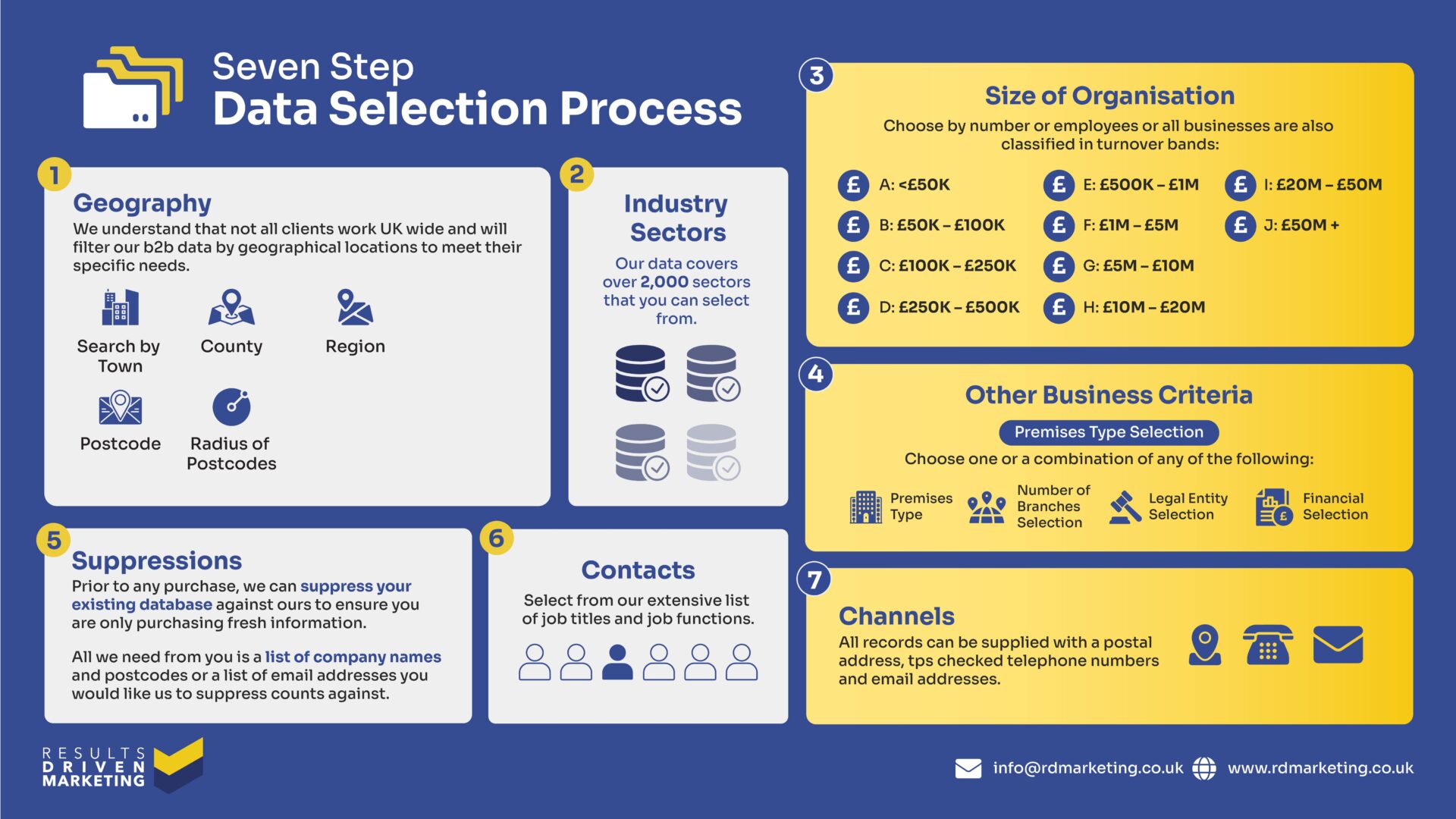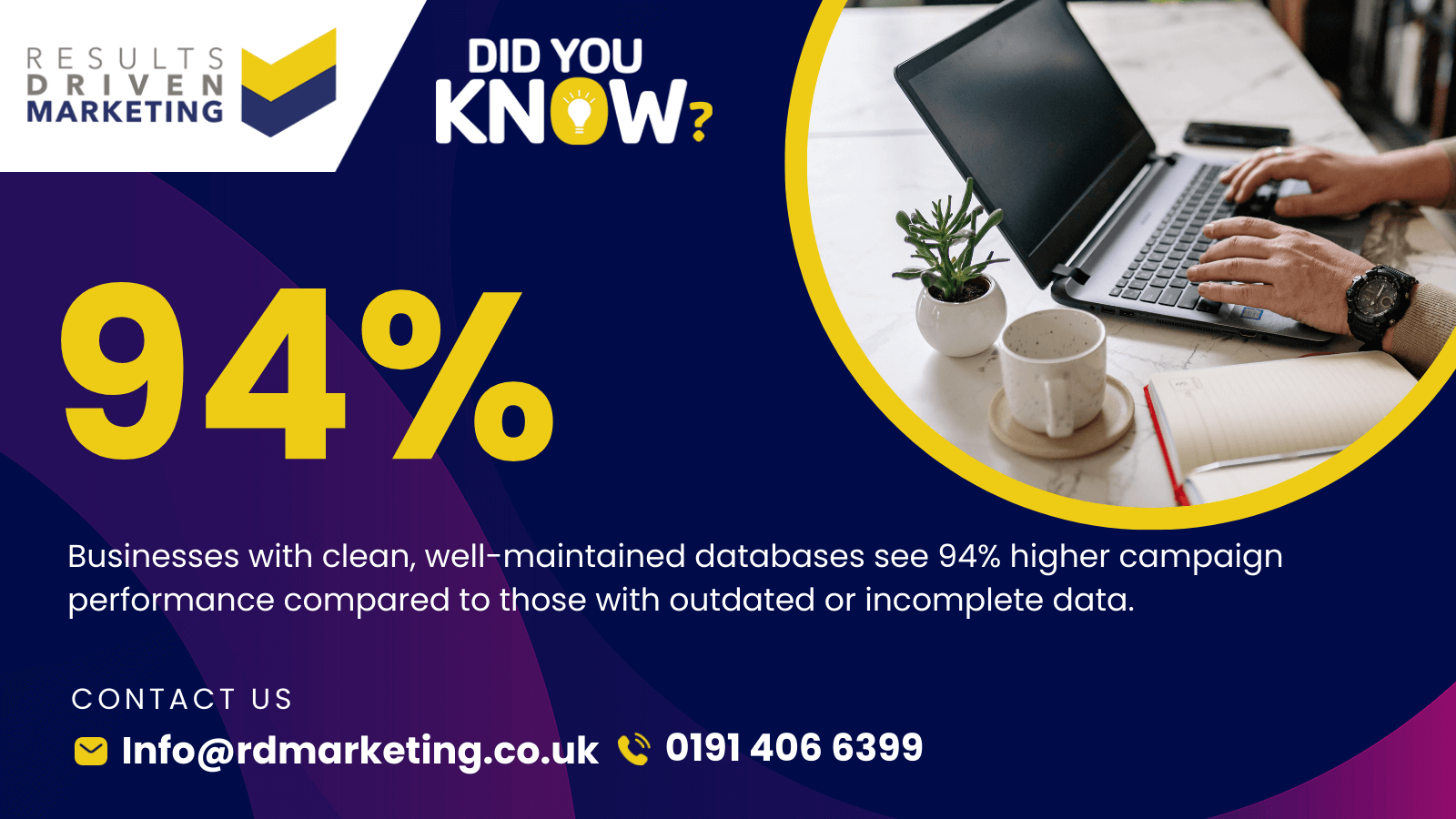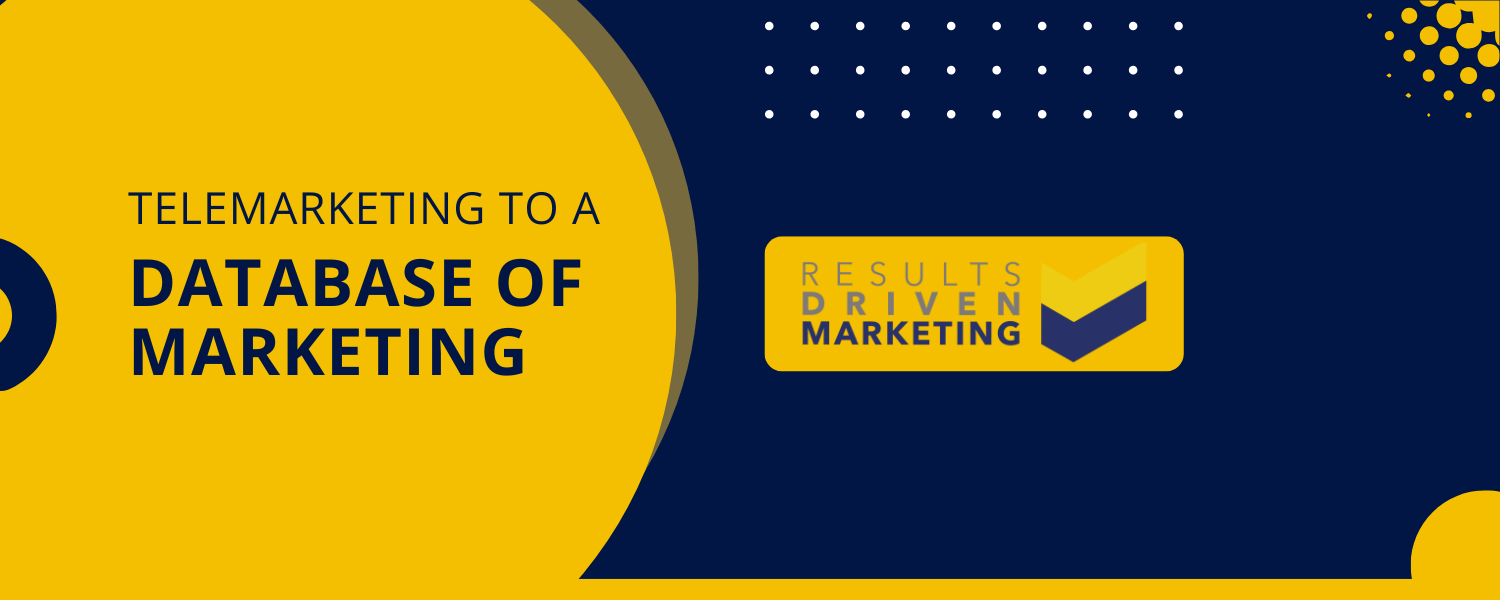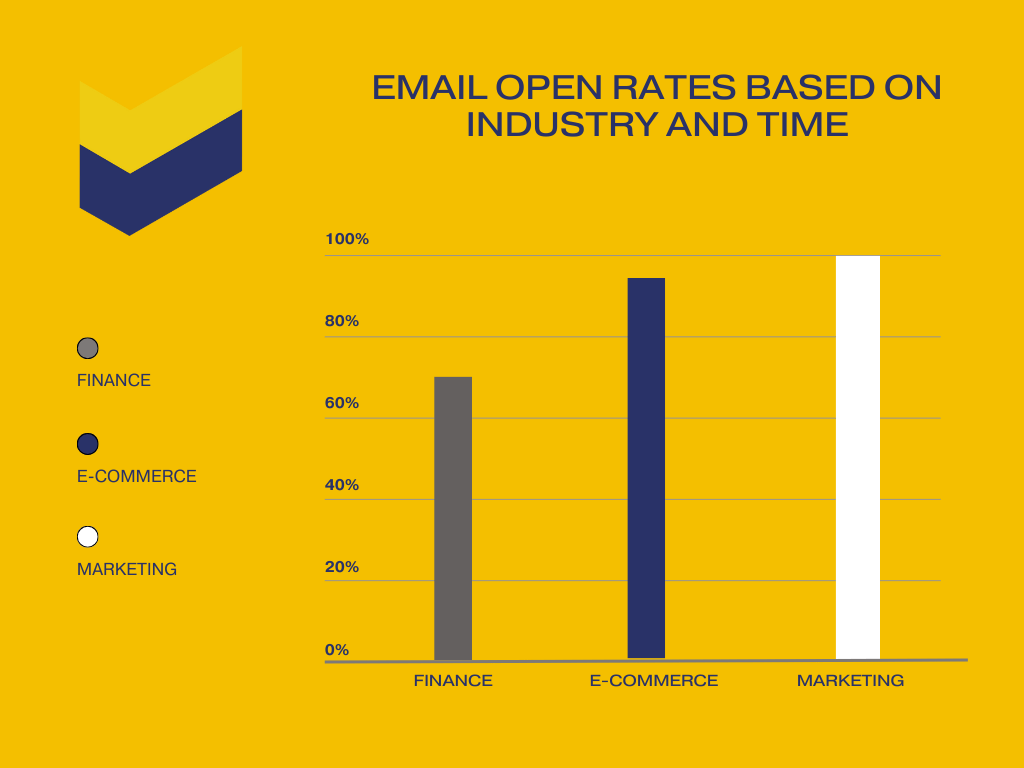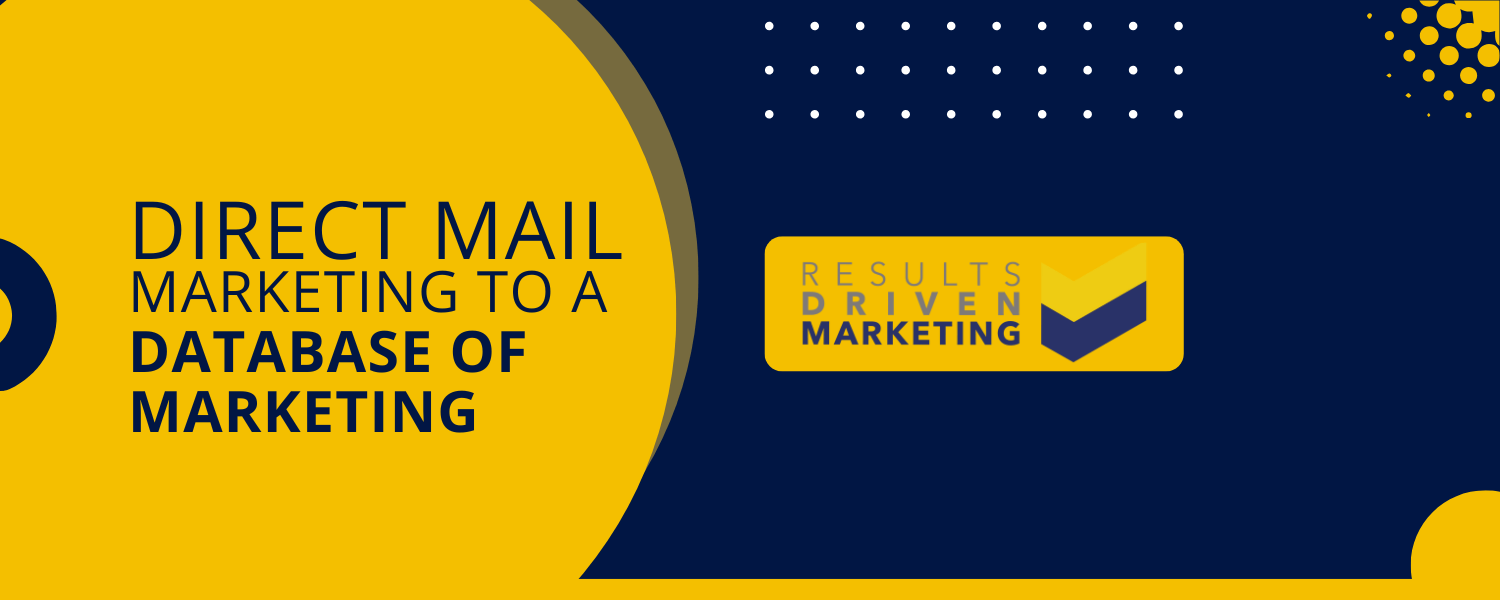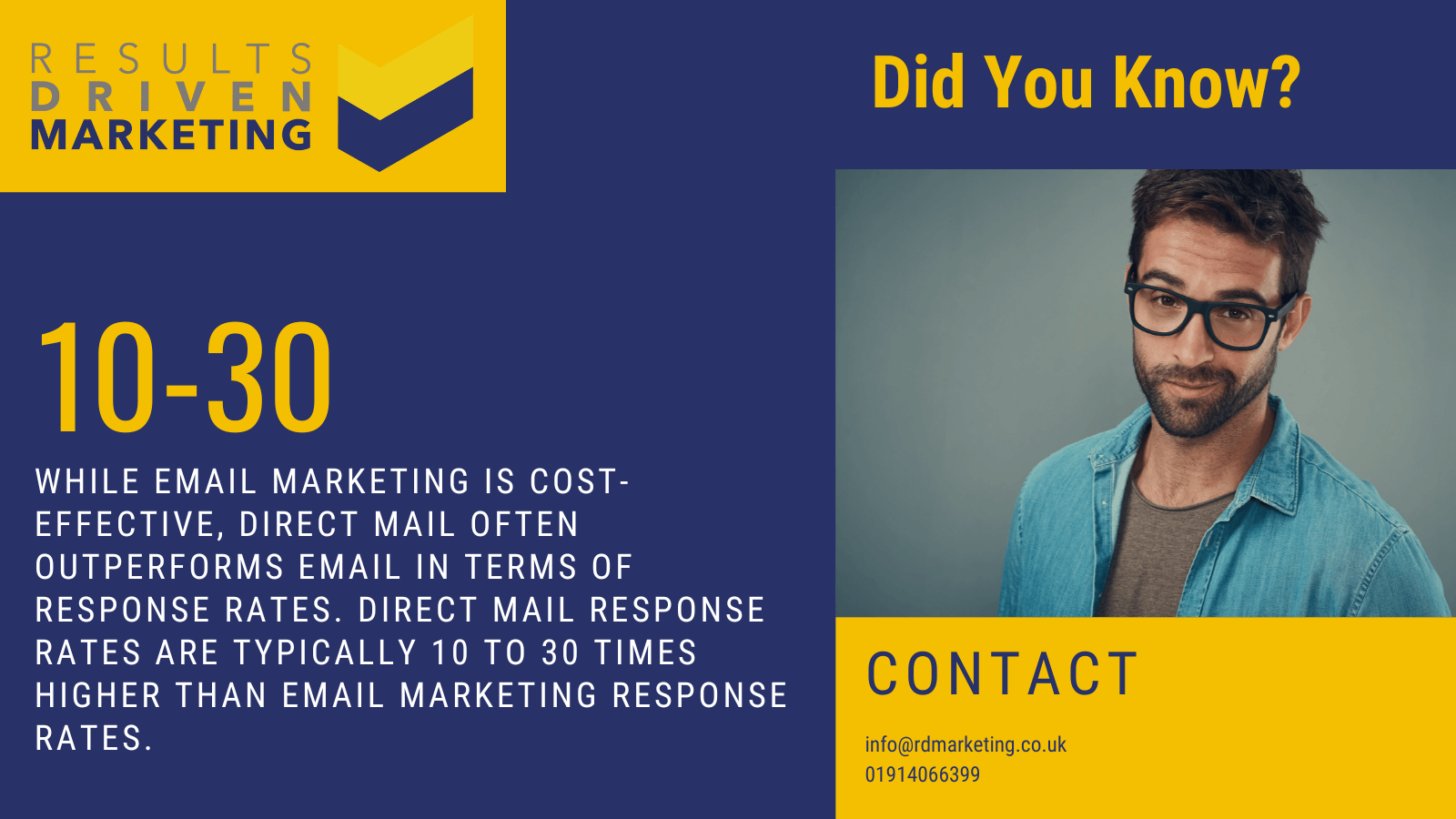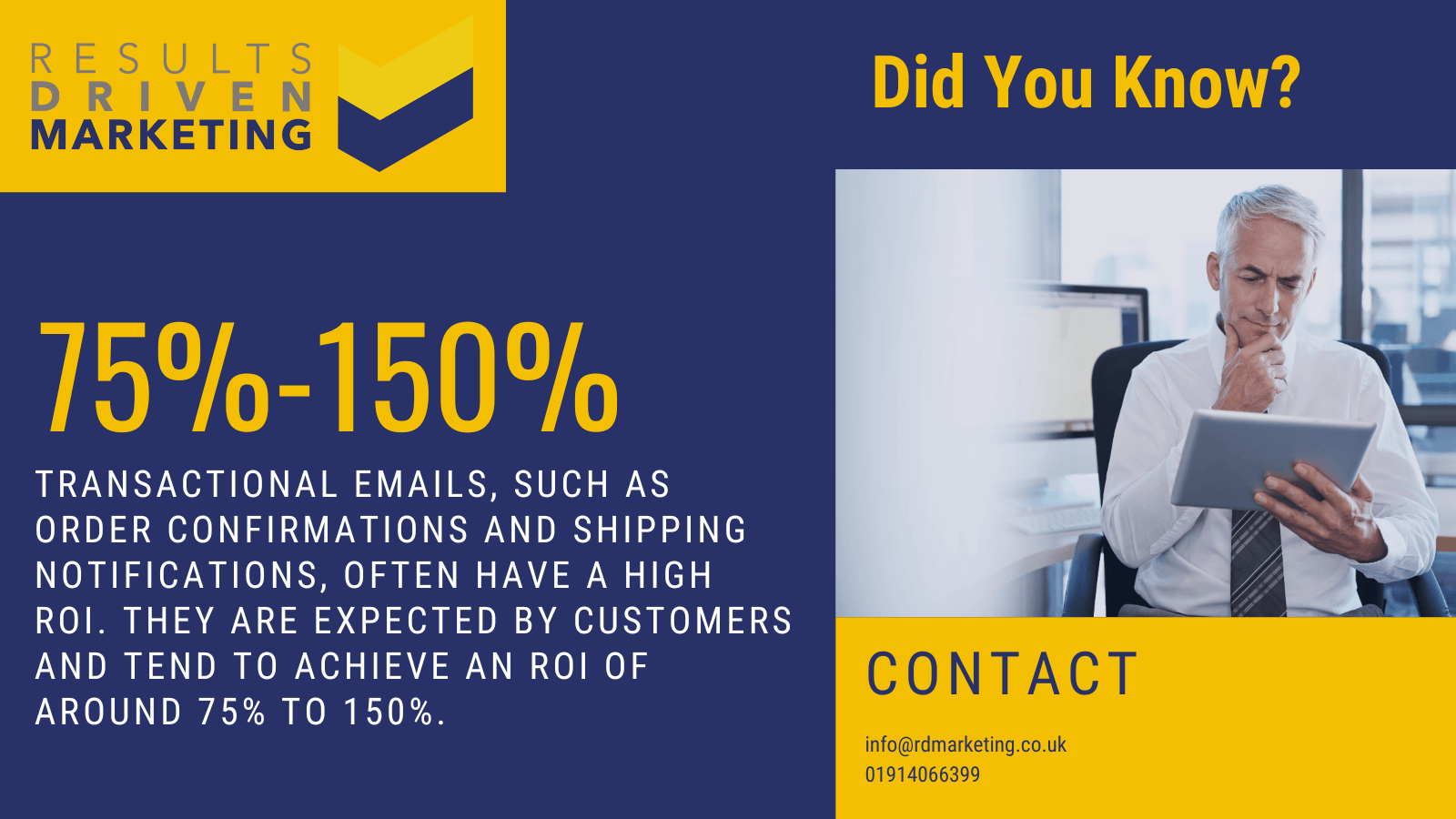
Database Marketing | The Ultimate Guide 2025
Database marketing is changing the game when it comes to how businesses connect with their audiences, and in 2025, it’s becoming more important than ever.
Here’s the thing—companies that use database marketing are seeing ROI improvements of up to 30%, compared to sticking with old-school methods. Pretty impressive, right? It’s not just a nice-to-have anymore; it’s an absolute must for businesses that want to thrive in these days, data-driven landscape.
At its core, database marketing is about using customer data to create more targeted, personalised, and impactful marketing campaigns. By tapping into comprehensive data sources like B2B data or consumer data, businesses can segment their audiences, predict behaviors, and drive conversions effectively. With advancements in tools like email marketing management services and data cleansing services, the possibilities for refining your campaigns have expanded like never before.
This guide will take you step-by-step through everything you need to know about database marketing in 2025. From understanding its core principles to mastering segmentation and personalisation, we’ll dive deep into strategies, tools, and best practices. Whether you’re a seasoned marketer or a beginner looking to implement database marketing, this guide has you covered.
Throughout the article, you’ll find actionable insights, real-world examples, and links to essential services like B2B Data and Data Enrichment Services. These resources can help you harness the full potential of database marketing to grow your business.
Table of contents:
What is Database Marketing?
At its core, database marketing is all about using customer data to create highly targeted and personalised marketing campaigns. Instead of a one-size-fits-all approach, it allows businesses to tailor their messaging to specific audiences based on real insights. Simply put, it’s the art and science of leveraging data to connect with the right people at the right time with the right message.
Unlike traditional marketing, which often relies on broad, generic outreach, database marketing digs deeper. It focuses on collecting, organising, and analysing data—like customer preferences, purchase history, and demographics. With this information, businesses can craft campaigns that are more relevant and engaging. For example, using tools like our B2B Data or Direct Mail Data, companies can access precise audience segments to improve the effectiveness of their outreach efforts.
How Does It Differ from Traditional Marketing?
Here’s how database marketing stands apart:
- Personalisation at Scale: Traditional marketing is often about casting a wide net, while database marketing hones in on individual needs and preferences.
- Data-Driven Decisions: Instead of relying on assumptions, businesses make informed choices based on customer insights.
- Ongoing Optimisation: Campaigns are continuously refined using data analysis, making them more effective over time.
Key Benefits of Database Marketing
Improved Personalisation
Personalised campaigns drive better engagement. Imagine sending an email that speaks directly to a customer’s recent purchase or browsing habits—tools like our Email Marketing Management Services make this possible.
Boosted ROI
With a more targeted approach, businesses can reduce wasteful spending and focus resources on strategies that work. Using a CTPS Checker ensures compliance and improves campaign efficiency.
Enhanced Customer Insights
By analyzing data, businesses can understand their customers better, anticipate needs, and even predict future behaviors. Services like our Data Cleansing Services and Data Enrichment Services ensure your data is always accurate and actionable.
Ultimately, database marketing empowers businesses to move away from generic campaigns and create meaningful, data-driven connections with their audiences. Whether you’re exploring International Email Lists or tapping into detailed Consumer Data, the possibilities are endless when your marketing is backed by powerful data.
Why Database Marketing is Essential in 2025
In 2025, database marketing is no longer just an innovative strategy—it’s a necessity for businesses that want to stay ahead of the competition.
As technology evolves and customer expectations grow, the way we market has had to keep pace. Database marketing, with its focus on precision and personalisation, has become a cornerstone for successful campaigns.
The Evolution of Database Marketing
Database marketing has come a long way from its early days of basic customer segmentation. Back then, it was about gathering simple demographic data and hoping for the best. Fast forward to 2025, and it’s a whole different ball game.
Today, businesses are leveraging big data, advanced analytics, and tools like AI-driven insights to create marketing strategies that feel less like guesswork and more like science. For instance, using tools like Data Enrichment Services, businesses can turn raw data into actionable intelligence.
Trends Driving Its Importance in 2025
AI and Predictive Analytics
Artificial Intelligence is redefining how businesses approach database marketing. Predictive analytics tools help brands anticipate customer behaviors and preferences, enabling them to tailor campaigns that resonate deeply with their audience.
Big Data for Better Targeting
With vast amounts of data available, marketers can dive deeper into consumer insights than ever before. Pairing big data with resources like Consumer Data allows for hyper-targeted marketing strategies that deliver results.
Marketing Automation
Automation tools have streamlined the entire process, from creating segmented lists to running email campaigns. Solutions like Email Marketing Management Services enable marketers to connect with customers efficiently and effectively.
Proof of Effectiveness: The Numbers Don’t Lie
According to industry research, businesses that prioritise database marketing report:
- A 20% increase in lead conversions compared to traditional methods.
- Up to 30% higher ROI on targeted campaigns.
For example, a retailer that implemented a direct mail campaign using segmented Direct Mail Data saw a 25% boost in engagement rates by delivering offers personalised to individual purchasing habits.
Why It’s Critical for Your Business
In today’s fast-paced world, customers expect brands to understand their needs and preferences. Database marketing provides the foundation for this level of engagement by helping businesses utilise tools like B2B Data or Telemarketing Data to connect with the right audience. It’s not just about collecting data; it’s about keeping it clean and actionable with services like Data Cleansing Services.
Key Components of a Database Marketing Strategy
Creating an effective database marketing strategy isn’t just about having data—it’s about knowing how to use it to build meaningful connections with your audience. Let’s break down the essential steps you’ll need to take to make your database marketing strategy work.
Building a Robust Customer Database
A solid database is the foundation of any successful database marketing strategy. Without accurate and comprehensive data, it’s nearly impossible to connect with your audience in a meaningful way.
- Why Data Collection and Quality Matter
High-quality data is essential for effective targeting. Outdated or incorrect information can lead to wasted time and resources. Services like data cleansing can ensure your database is accurate and ready to use. - Tools for Gathering Data
Using tools like CRM software makes collecting and organising data easier than ever. Platforms such as HubSpot or Salesforce allow businesses to track customer interactions, preferences, and purchase history. You can also enhance your database with services like our data enrichment, which adds missing details to your existing customer profiles.
Segmentation and Targeting
Once your database is in place, the next step is segmentation. Segmentation involves breaking your audience into smaller, more targeted groups based on shared characteristics.
- How to Segment Data for Better Results
- Use demographic details like age, location, or income.
- Incorporate behavioral data such as past purchases or browsing history.
- Leverage firmographics when using B2B data to target businesses by size or industry.
- Examples of Successful Segmentation
Imagine a retail brand creating targeted email campaigns based on purchase history. For example, they could send a promotional offer for winter clothing to customers who purchased similar items last year, using insights from email address list data.
Personalisation and Customer Experience
Personalisation is where database marketing truly shines. By tailoring messages to each customer’s unique preferences, you can create a more engaging experience.
- Why Personalisation Works
Personalisation shows your audience that you understand their needs. A simple example? A personalised email greeting versus a generic “Dear Customer.” It’s no surprise that personalisation can increase email open rates by 26%. - Examples of Personalised Campaigns
A travel company might send vacation recommendations based on past bookings. With tools like telemarketing data, they could even follow up with tailored offers, ensuring every interaction feels relevant.
Automation Tools
Database marketing becomes infinitely easier—and more effective—when you bring automation tools into the mix.
- The Role of Automation in Database Marketing
Automation tools help manage repetitive tasks like email campaigns, audience segmentation, and data analysis. This frees up time for focusing on strategy and creativity. - Top Tools to Consider
- HubSpot and Salesforce for CRM and automation.
- Mailchimp for email campaigns.
- ActiveCampaign for advanced segmentation and workflow automation.
Using automation alongside a reliable CTPS checker ensures compliance while keeping your campaigns running smoothly.
Best Practices for Database Marketing in 2025
To make the most of database marketing in 2025, it’s crucial to follow some tried-and-true best practices. These strategies ensure that your campaigns are efficient, compliant, and, most importantly, impactful. Here are the key areas to focus on to stay ahead of the curve.
Keeping Your Database Clean and Updated
A clean and up-to-date database is the backbone of successful database marketing. Outdated or incorrect data can result in missed opportunities and wasted resources.
- Why It Matters
Regularly updating your database reduces bounce rates, improves email deliverability, and ensures that your campaigns are reaching the right audience. - Actionable Tips
- Perform routine checks for outdated or duplicate entries.
- Use tools like data cleansing services to remove errors and inconsistencies.
- Enrich your existing data with additional insights using data enrichment services.
Ensuring Data Compliance (e.g., GDPR, CCPA)
With stricter regulations like GDPR in the EU and CCPA in California, compliance is non-negotiable in database marketing. Following the rules not only avoids hefty fines but also builds trust with your audience.
- Key Compliance Steps
- Use a reliable CTPS checker to ensure your telemarketing efforts are compliant.
- Obtain explicit consent before adding individuals to your mailing lists.
- Be transparent about how you collect and use customer data, especially if you’re leveraging tools like consumer data.
Measuring and Optimising Campaigns
One of the biggest advantages of database marketing is the ability to track and measure results in real-time. But it doesn’t stop there—optimisation is just as important.
- How to Measure Effectiveness
- Monitor key metrics like open rates, click-through rates, and conversion rates.
- Split test email subject lines or campaign content to see what resonates most with your audience.
- Optimising for Better Results
Services like email marketing management make it easier to track performance and refine campaigns. For instance, you could segment a B2B data list further based on engagement levels to ensure better targeting.
Using Predictive Analytics and AI
Predictive analytics and AI are game-changers in database marketing. They enable businesses to anticipate customer needs and behaviors, helping you stay one step ahead of the competition.
- Benefits of Predictive Analytics
- Identify trends in customer purchasing behavior.
- Personalise marketing efforts based on likely future actions.
- Practical Applications
- Use AI to recommend the best products or services to individual customers.
- Enhance segmentation accuracy for an email address list or international email list campaign.
Telemarketing to a Database of Marketing
Harnessing Telemarketing to Enhance Database Marketing: The Unsung Benefits
Database marketing, as a buzzword in today’s digital age, typically brings to mind email campaigns, personalised online advertisements, and social media targeting.
However, one traditional marketing channel that can seamlessly align with database marketing for enhanced results is telemarketing.
By integrating telemarketing with database marketing strategies, businesses can enjoy a multitude of benefits. In this article, we’ll explore how telemarketing can elevate the effectiveness of database marketing.
Personalised Customer Engagement
While digital messages are efficient, voice interactions bring a personal touch that’s hard to replicate. Telemarketing can utilise database marketing insights to tailor calls, ensuring conversations are relevant and resonate with the receiver’s preferences and needs.
Real-time Feedback
One of the advantages telemarketing has over many digital channels is the immediacy of feedback. Conversations allow businesses to gather real-time insights, which can be fed back into the database marketing system to refine future campaigns.
Enhanced Data Verification
Outdated or incorrect data can be the Achilles heel of database marketing. Telemarketing provides an opportunity to validate and update database records during calls, ensuring that the database of marketing remains accurate and up-to-date.
Overcoming Digital Barriers
Not all target audiences are digitally active or responsive to online campaigns. By incorporating telemarketing into database marketing strategies, businesses can reach segments that might be less engaged or even inaccessible through digital channels.
Building Stronger Relationships
A well-executed telemarketing call, informed by database marketing insights, can foster deeper connections. Voice interactions can evoke emotions, clarify doubts, and build trust in ways that automated digital campaigns might struggle to achieve.
Immediate Conversion Opportunities
Database marketing can identify potential leads, but telemarketing can close the deal. The immediacy of a phone conversation presents an opportunity for instant conversions, especially when agents are equipped with data-driven insights about the prospect.
Augmenting Multichannel Campaigns
Incorporating telemarketing into a broader database marketing strategy can lead to powerful multichannel campaigns. A follow-up call after an email, for example, can bolster the message’s impact and improve conversion rates.
Richer Customer Profiles
Every telemarketing call can be a goldmine of information. The insights gained during these interactions, from updated preferences to feedback on products, can enhance the depth and richness of customer profiles within the database marketing system.
Conclusion
Telemarketing, often seen as a standalone strategy, can in fact supercharge database marketing efforts when integrated effectively. It adds a human touch, provides immediacy, and bridges the gap between traditional and digital marketing channels.
Businesses aiming to get the most out of their database marketing endeavours should not overlook the potential of telemarketing. In the harmonious convergence of the two, there lies a potent strategy for meaningful customer engagement and conversions.
Telemarketing Best Practices for UK Businesses: Leveraging Database Marketing
When it comes to telemarketing in the UK business landscape, success often hinges on striking a balance between persistence and respect, relevance and timing. With the rise of database marketing, telemarketers have a powerful tool at their disposal, allowing them to fine-tune their outreach and ensure greater efficacy.
In this part of the article, we’ll explore the best practices for telemarketing when selling products and services to UK businesses, placing a keen emphasis on harnessing database marketing.
Understand Data Protection Regulations
Before diving into telemarketing strategies, it’s imperative to familiarise oneself with the UK’s data protection regulations, notably the General Data Protection Regulation (GDPR) and the Privacy and Electronic Communications Regulations (PECR). These rules govern how businesses can collect, store, and use personal data.
Utilise a Robust Database of Marketing
With database marketing, you have access to a wealth of information about potential leads. Use this telemarketing data to segment and prioritise your list, focusing on businesses that are most likely to benefit from your product or service.
Personalise Your Calls
Gone are the days of generic sales pitches. Utilising insights from database marketing, tailor your conversations to address the specific needs, challenges, or interests of the business you’re calling. Personalised pitches are more likely to resonate and spark interest.
Respect the ‘Do Not Call’ List
Always cross-check your list with the Corporate Telephone Preference Service (CTPS). Calling businesses registered on this list can result in hefty fines.
Choose the Right Timing
Database marketing can provide insights into the best times to call specific businesses. Respect business hours and avoid calling during peak operational times. For many businesses, mid-morning or mid-afternoon might be the most receptive periods.
Train Your Team
Even with the best database marketing insights, the success of a telemarketing call often comes down to the skills of the caller. Regularly train your team on the product, industry trends, and communication skills. Role-playing can be an effective way to practice different scenarios.
Be Transparent and Honest
UK businesses appreciate transparency. Always introduce yourself, your company, and the purpose of the call upfront. If the conversation progresses, ensure that any claims about your product or service are accurate and verifiable.
Listen Actively
While the aim is to pitch your product or service, listening is equally crucial. Understand the needs and reservations of the business you’re speaking to. Their feedback can also be invaluable for future database marketing strategies.
Track and Analyse Call Results
After each call, update your database of marketing with the results. Over time, this will provide a clearer picture of which strategies work, the typical objections raised, and the businesses that are most receptive.
Follow Up
If a business shows interest, ensure timely follow-up. Whether it’s sending additional information, arranging a product demo, or scheduling another call, prompt action demonstrates professionalism and can enhance conversion rates.
Conclusion
Telemarketing remains a powerful sales channel for UK businesses, and with the integration of database marketing, its potential is even more significant. By aligning telemarketing strategies with insights drawn from a robust database of marketing, businesses can engage their targets more effectively, fostering genuine connections and driving sales in the competitive UK market.
How Measure the Results of a Telemarketing Campaign
Telemarketing remains an effective marketing strategy for many businesses, providing direct communication with prospective customers and generating valuable leads.
However, evaluating the success of a telemarketing campaign can be challenging, as it involves analysing multiple variables and metrics.
In this part of the article, we will discuss the best ways to measure the results of a telemarketing campaign, enabling you to make informed decisions for future endeavours.
Set Clear Goals and Objectives
Before launching a telemarketing campaign, it is essential to define clear goals and objectives. These will serve as benchmarks for assessing the campaign’s success. Typical objectives may include generating leads, increasing sales, or promoting brand awareness.
By setting specific, measurable, achievable, relevant, and time-bound (SMART) goals, you can easily track your campaign’s progress and identify areas for improvement.
Monitor Key Performance Indicators (KPIs)
KPIs are quantifiable measurements that help evaluate the effectiveness of a campaign. For telemarketing, some common KPIs include:
– Call volume: The number of calls made by agents during a specific period
– Conversion rate: The percentage of calls that result in a successful outcome, such as a sale or lead
– Call duration: The average length of each call
– First call resolution rate: The percentage of calls resolved during the initial interaction
– Abandoned call rate: The percentage of calls where the customer hangs up before speaking with an agent
By monitoring these KPIs, you can gain insights into your campaign’s performance and identify areas for improvement.
Evaluate Return on Investment (ROI)
ROI is a critical metric for assessing the success of any marketing campaign. To calculate telemarketing ROI, compare the total revenue generated from the campaign to the total cost of running it, including expenses such as personnel, technology, and phone charges. A high ROI indicates a successful campaign, while a low or negative ROI suggests the need for optimisation.
Conduct Surveys and Gather Feedback
Surveys and customer feedback are valuable tools for gauging the effectiveness of your telemarketing campaign. Conduct post-call surveys to understand customers’ experiences and satisfaction levels. This information can help you identify strengths and weaknesses within your campaign and improve the quality of future interactions.
Analyse Agent Performance
Agent performance plays a significant role in the overall success of a telemarketing campaign. Regularly assess your agents’ performance by monitoring call recordings, reviewing KPIs, and providing ongoing training and support. By fostering a culture of continuous improvement, you can boost the overall effectiveness of your campaign.
Track Long-term Results
While short-term metrics such as call volume and conversion rate are crucial, it’s essential to track long-term results to understand the true impact of your telemarketing campaign. Monitor the lifetime value of customers acquired through the campaign, as well as any recurring business or referrals generated. This information will provide a more comprehensive view of your campaign’s success.
TPS checking for Compliant Telemarketing
The Telephone Preference Service (TPS) is an initiative started by the UK government to protect individuals from unwanted sales and marketing calls. The service provides a register where people can sign up and indicate that they do not want to receive unsolicited calls.
This free service is a great tool for individuals who want to control the type and frequency of calls they receive.
Although the TPS is voluntary, all telemarketing companies operating in the UK are legally obliged to check their calling database against the TPS register every 28 days. Failure to do so can lead to fines of up to £500,000.
The Information Commissioner’s Office (ICO) is the regulatory body responsible for enforcing this law.
The importance of complying with the TPS regulations cannot be overemphasised. Cold calling can be a nuisance to many individuals and causes a great deal of inconvenience.
People receive calls during unsuitable times, like meal times, or when they are trying to relax after a long day at work. It can also be stressful for vulnerable and elderly people who may feel pressured and intimidated. More importantly, calling individuals who have registered with the TPS can result in serious consequences for telemarketers.
Companies can face hefty fines and legal action that can be detrimental to their business reputation. Customers who feel they have been harassed by telemarketers can also lodge complaints against the company, leading to public scrutiny and negative publicity.
In conclusion, the Telephone Preference Service is a vital tool for individuals who want to control the type and frequency of calls they receive. Companies conducting cold calling must take measures to check their database against the TPS register to avoid calling registered numbers.
This not only prevents unwanted solicitations but also protects telemarketers from legal repercussions and negative publicity.
Compliance with the TPS regulations is not only good for individuals but also a responsible business practice that can ultimately lead to customer satisfaction and improved reputation.
Navigating Past the Gatekeeper: Telemarketing with Databases for Marketing
Telemarketing remains a powerful tool in the B2B sales arsenal. However, one of the most significant challenges telemarketers face is getting past the gatekeeper – those individuals whose job it is to screen calls and protect decision-makers’ time. When armed with the right strategies and leveraging databases for marketing, this hurdle can be overcome. This article will guide you on how to navigate past the gatekeeper and ensure your telemarketing campaigns reach the right ears.
Research and Preparation
Before making the call, use databases marketing to gather as much information as possible about the business and the decision-maker. Knowing the company’s industry, recent news, and the decision-maker’s name can make your approach more personalised and relevant.
Be Respectful and Professional
Always treat gatekeepers with respect. They are professionals doing their job. Being courteous and understanding can go a long way in building rapport.
Be Direct but Not Pushy
Clearly state your purpose without being overly aggressive. A straightforward approach, combined with the information from your databases marketing, can demonstrate that your call is genuine and worth passing through.
Build a Relationship with the Gatekeeper
Over time, aim to build a relationship with gatekeepers. Remembering previous conversations, their names, or even small details can make subsequent calls smoother. They’re more likely to put through someone they recognise and trust.
Call at Optimal Times
Using insights from databases for marketing, try to determine the best times to call. Early mornings or late afternoons might be more fruitful as decision-makers could be more accessible during these times.
Leverage Social Media
Before resorting to a cold call, engage with the business or decision-maker on platforms like LinkedIn. A familiar name has a better chance of getting past the gatekeeper.
Offer Value
Ensure that your call offers value. Whether it’s a unique solution, a special offer, or valuable industry insights, gatekeepers are more likely to forward calls they believe will benefit the decision-maker.
Be Prepared for Objections
Gatekeepers are trained to screen calls, so be ready for objections. Have responses prepared for common pushbacks and use information from your databases for marketing to tailor your replies.
Ask for the Best Contact Time
If the decision-maker is unavailable, instead of leaving a message, ask the gatekeeper for a more suitable time to call back. This increases the chances of your call being expected and taken.
Continuously Update Your Approach
Regularly update your approach based on feedback and results. Databases for marketing can provide insights into what works and what doesn’t, allowing for continuous refinement.
Conclusion
Getting past the gatekeeper is often the most challenging part of B2B telemarketing. However, with the right strategies and the invaluable insights provided by databases for marketing, this challenge can be transformed into an opportunity.
By building relationships, offering genuine value, and continuously refining your approach, you can ensure your telemarketing campaigns reach their intended audience and drive results.
Contact us today to find out how we can help you remain compliant
Direct Mail Marketing to a Database of Marketing
The Benefits of Direct Mail Marketing to a Database of Marketing
Tangible and Personal:
Direct mail provides a physical presence that recipients can touch, feel, and hold in their hands. This tangible aspect can create a stronger connection and make a lasting impression. It allows for personalisation, such as addressing recipients by name and tailoring the content to their specific interests, which enhances the sense of individual attention.
Targeted Reach:
Direct mail enables precise targeting based on various criteria, such as demographics, location, purchasing history, or customer segmentation. This allows marketers to reach specific audiences with relevant messaging, increasing the chances of engagement and response.
High Response Rates:
Direct mail campaigns often yield higher response rates compared to other marketing channels. Since direct mail is delivered physically, it tends to capture recipients’ attention more effectively and can lead to greater customer engagement. Response rates can be further enhanced through the use of compelling visuals, incentives, and clear calls to action.
Less Competition:
In an era dominated by digital marketing, direct mail stands out due to its decreasing popularity. With many companies focusing primarily on online channels, direct mail can be a less saturated marketing medium. This reduced competition can result in higher visibility for your message and increased chances of customer conversion.
Measurable Results:
Direct mail campaigns provide measurable results through various tracking methods. By using unique promotional codes, personalised URLs, or dedicated phone numbers, marketers can track the response and conversion rates accurately. These insights help refine future campaigns, improve targeting, and optimise marketing strategies.
Brand Awareness and Recall:
Direct mail allows for creative branding opportunities. By incorporating eye-catching designs, compelling copy, and memorable visuals, you can reinforce brand awareness and leave a lasting impression in recipients’ minds. Direct mail can also serve as a reminder or follow-up after initial contact through other marketing channels, reinforcing your message and increasing brand recall.
Integration with Digital Channels:
Direct mail can be integrated with digital channels to create a multi-channel marketing approach. Including QR codes, personalised URLs, or social media handles in direct mail pieces can drive recipients to online platforms, websites, or landing pages, enhancing engagement and facilitating seamless customer journeys.
It’s worth noting that the success of a direct mail campaign depends on various factors such as targeting, creative execution, offer relevance, and the overall marketing strategy. Conducting thorough research, understanding your target audience, and carefully planning your direct mail campaign are essential for achieving optimal results.
Direct Mail Marketing Best Practices to a Database of Marketing
Direct mail remains a powerful and effective marketing tool in today’s digital age. When executed with precision and adhering to best practices, direct mail campaigns have the potential to yield exceptional results. In this article, we will explore some key best practices to help you maximise the impact of your direct mail efforts and achieve optimal results.
Define Clear Objectives:
Before embarking on a direct mail campaign, clearly define your objectives. Whether you aim to generate leads, increase brand awareness, drive sales, or promote a specific offer, establishing clear goals will guide your strategy and ensure focused execution.
Understand Your Target Audience:
Take the time to understand your target audience.
Conduct thorough research to gain insights into their preferences, interests, and demographics.
This knowledge will enable you to tailor your messaging, design, and offer to resonate effectively with your recipients.
Segment Your Mailing List:
Segmenting your direct mailing list allows you to deliver highly targeted and relevant messages. Group recipients based on factors such as demographics, buying behaviour, or interests. By tailoring your content to each segment’s specific needs, you can significantly increase response rates and conversion rates.
Compelling and Personalised Content:
Craft compelling content that captures attention and encourages action. Personalisation is key; address recipients by name, incorporate relevant details, and speak directly to their pain points or aspirations. Engage recipients with persuasive copy, impactful visuals, and a clear call to action.
Design for Visual Impact:
Invest in professional and eye-catching design that aligns with your brand identity. A visually appealing direct mail piece will grab attention and enhance brand recall. Use high-quality images, clear typography, and a well-structured layout to create an aesthetically pleasing and memorable experience for recipients.
Clear Call to Action:
Every direct mail piece should have a clear and compelling call to action. Whether it’s directing recipients to visit your website, call a dedicated phone line, or redeem a special offer, make it easy and enticing for them to take the desired action. Use actionable language and provide clear instructions.
Incorporate Tracking Mechanisms:
Tracking the success of your direct mail campaign is crucial for measuring results and refining future efforts.
Use unique promo codes, personalised URLs, or dedicated phone numbers to track response rates and conversion rates accurately.
This data will enable you to evaluate the campaign’s effectiveness and make data-driven decisions for future campaigns.
Integration with Digital Channels:
Combine the power of direct mail with digital channels to amplify your marketing impact. Include QR codes, personalised URLs, or social media handles in your direct mail pieces to encourage recipients to engage with your online platforms.
This integration allows for a seamless customer journey and boosts overall campaign effectiveness.
Test, Analyse, and Refine:
Testing different variables within your direct mail campaign can provide valuable insights.
Experiment with various elements such as design, messaging, offers, or formats to determine what resonates best with your audience.
Continuously analyse results and make data-informed adjustments to optimise your future campaigns.
Conclusion:
Direct mail, when executed with best practices in mind, remains a highly effective marketing channel. By setting clear objectives, understanding your audience, delivering compelling content, and leveraging tracking mechanisms, you can unlock the true potential of your direct mail campaigns.
Stay innovative, test and refine your strategies, and integrate digital channels to create a comprehensive marketing approach. Embrace these best practices, and watch your direct mail campaigns drive meaningful engagement, boost conversions, and contribute to your overall marketing success.
Measuring the Results of a Direct Mail Campaign Targeting a Database of Marketing
Direct mail campaigns remain a cornerstone of many marketing strategies, especially when targeting specific audiences like a database of marketing.
However, the success of such campaigns hinges not just on execution but also on effective measurement. This article will delve into how to measure the results of a direct mail campaign aimed at a Database of Marketing.
Define Clear Objectives
Before launching your campaign, define what success looks like. Are you aiming for increased sales, more inquiries, or heightened brand awareness? Having clear objectives will guide your measurement efforts.
Track Response Rates
One of the most straightforward metrics, the response rate, indicates the percentage of recipients from your Database of Marketing who responded to your mail. It’s calculated as:
Response Rate=(Number of ResponsesTotal Mails Sent)×100
Monitor Conversion Rates
While responses are great, conversions are better. This metric shows the percentage of respondents who took the desired action, such as making a purchase or signing up for a service.
Conversion Rate=(Number of ConversionsNumber of Responses)×100
Calculate ROI
Return on Investment (ROI) is a crucial metric to determine the profitability of your campaign targeting the Database of Marketing. Use the formula:
ROI=(Net ProfitCost of Campaign)×100
Use Unique Identifiers
To accurately track responses, use unique promo codes, dedicated phone lines, or custom URLs for your campaign. This ensures that any engagement can be directly attributed to your direct mail efforts.
Gather Feedback
Engage with respondents to gather qualitative feedback. This can provide insights into what worked, what didn’t, and how you can improve future campaigns targeting your Database of Marketing.
Monitor Ancillary Metrics
While primary metrics like response and conversion rates are vital, don’t ignore ancillary metrics like:
- Average Order Value (AOV): The average amount spent by customers who converted.
- Customer Lifetime Value (CLTV): Predicted net profit attributed to the entire future relationship with a customer.
Compare with Past Campaigns
Benchmark your results against previous campaigns. This can provide context and show whether your strategies are improving or need tweaking.
Analyse Segmentation Effectiveness
If you segmented your Database of Marketing for the campaign, analyse which segments performed best. This can guide future segmentation and targeting strategies.
Consider External Factors
While analysing results, consider external factors that might have influenced the campaign’s success or failure, such as market conditions, competitor actions, or broader economic trends.
Calculating the ROI of Direct Mail Campaigns Using a Database for Marketing
In the realm of business-to-business (B2B) marketing, direct mail campaigns remain a potent tool for reaching potential clients and partners. Leveraging a database for marketing can significantly enhance the effectiveness of these campaigns. This article will guide you through the steps to calculate the return on investment (ROI) of direct mail campaigns targeting businesses, emphasising the importance of a robust Database of Marketing.
The Significance of ROI
ROI is a critical metric that gauges the profitability of an investment. It provides businesses with a clear picture of the returns they can expect from their marketing efforts. The formula for ROI is:
ROI=(Net ProfitCost of Investment)×100
Assemble the Necessary Data
To calculate ROI, you’ll need:
- Cost of the Campaign: This encompasses printing, postage, design, and crucially, the expenses related to the database for marketing.
- Revenue Generated: This is the total sales resulting from the campaign. Track this using unique codes, dedicated phone lines, or specific tracking URLs.
Determine the Net Profit
Net Profit is the difference between the revenue generated and the cost of the campaign:
Net Profit=Revenue Generated−Cost of Campaign
Calculate the ROI
Using the formula provided, determine the ROI:
ROI=(Net ProfitCost of Campaign)×100
Analysing the Results
A positive ROI indicates a profitable campaign, while a negative value suggests a need for reevaluation. For instance, an ROI of 30% implies a net gain of 30p for every £1 spent.
Enhancing ROI with a Database for Marketing
A well-curated database for marketing can significantly boost the ROI of your direct mail campaigns:
- Segmentation: Segment your database based on industry, company size, or other relevant criteria. This ensures your message reaches the most receptive audience.
- Personalisation: Tailor your message to address the specific needs and challenges of the businesses in your database.
- Data Accuracy: Regularly update and clean your database for marketing to ensure you’re reaching the right decision-makers and not wasting resources on outdated or irrelevant contacts.
- Testing: Use a portion of your database to test different campaign elements, from design to messaging, and refine based on the results.
Continuous Improvement
Always be on the lookout for ways to enhance your campaign. This might involve expanding or refining your database for marketing, tweaking your message, or exploring new design elements.
Conclusion
Direct mail campaigns, especially those targeting businesses, can yield impressive returns when executed correctly. A robust database for marketing is a pivotal asset in this endeavor, enabling precise targeting and personalisation.By understanding and regularly calculating ROI, businesses can ensure they’re maximising the potential of their direct mail campaigns and making the most of their Database of Marketing.
Measuring Success: Calculating the ROI of Direct Mail Campaigns to Your Database of Marketing
In the digital era, direct mail continues to be an effective tool for reaching out to a Database of Marketing. It offers a tangible, personal touch that can resonate with recipients in a way digital communications sometimes cannot. However, the success of direct mail campaigns hinges on accurately measuring their return on investment (ROI). Here’s a step-by-step guide on how to calculate the ROI of direct mail campaigns targeting your Database of Marketing.
Define the Cost of the Campaign
Calculate Total Expenditure: Start by calculating the total cost of your direct mail campaign. This should include the cost of design, printing, materials, postage, and any additional expenses such as renting a list from a Database of Marketing provider or hiring a copywriter. This figure is crucial as it represents the investment against which you’ll measure return.
Track Responses and Conversions
Measure Engagement and Sales: Keep a close track of how many recipients from your Database of Marketing respond to your direct mail and, more importantly, how many convert into customers. Conversion can be in the form of a purchase, a subscription, or any other action your campaign aimed to achieve.
Calculate Revenue Generated
Assess Financial Impact: The next step is to calculate the total revenue generated from the campaign. This can be done by adding up the sales directly attributed to the direct mail campaign. Ensure that you have a reliable tracking system in place, like unique promo codes or custom landing pages, to accurately attribute sales to the campaign.
Determine the Net Profit
Subtract Cost from Revenue: Once you have the total revenue, subtract the campaign cost from it. The resulting figure is your net profit, which is a key component in calculating the ROI.
Calculate the ROI
Use the ROI Formula: The ROI of your direct mail campaign can be calculated using the formula:
ROI = \(\(Net Profit / Campaign Cost\) \times 100\)
Expressing this as a percentage gives you a clear view of the return on every dollar spent.
Analyse and Compare
Benchmark Against Goals and Other Channels: Compare the ROI of your direct mail campaign against your initial objectives and other marketing channels. This comparison will help you understand the effectiveness of direct mail in reaching your Database of Marketing relative to other strategies.
Consider Long-Term Value
Look Beyond Immediate ROI: In addition to immediate ROI, consider the long-term value brought by new customers acquired through the campaign. Some customers might make repeat purchases or refer others, contributing to future revenue.
Factor in Intangible Benefits
Brand Awareness and Customer Loyalty: Direct mail can also contribute to building brand awareness and loyalty, which are important but less quantifiable benefits. Consider conducting surveys or tracking brand mentions to gauge these aspects.
Conclusion
Calculating the ROI of direct mail campaigns is essential for assessing their effectiveness in engaging your Database of Marketing. By following these steps, you can gain valuable insights into the financial returns of your campaigns and make informed decisions about future marketing strategies. Remember, a successful direct mail campaign is not just about immediate returns but also about building lasting relationships with your audience.
Purchase a Database
There is so much to cover that I won’t go into full detail now, but I will cover the absolute basics.
If you are going to purchase a database, make sure you have a clear data brief
It is essential to understand exactly who your target audience is and to develop an ICP.
You can do this on your own but may want to consider working alongside a supplier like Results Driven Marketing at this point to help you ask the questions of your customer database that you need to.
These questions might be along the lines of:
Where are your top customers located geographically?
What sectors do they operate in?
How many staff do they have?
How much do they turnover?
Who within those organisations do you look to target?
Make sure your potential supplier provides you with samples and breakdowns when buying a database for marketing
Getting this information is really important to make sure that your supplier fully understands your brief and is aware of exactly what your ICP is.
At Results Driven Marketing, we supply both breakdowns and then samples.
This makes sure clients are comfortable that we clearly understand and will be delivering a database that will work for you.
Before you purchase a database, check the licensing terms
Post-GDPR, most suppliers offer licensed products.
The most common is a 12-month multi-use licence.
This might sound like you can use it as much as you like over a 12-month period but may actually be limited to 12 email sends only.
We find that 12 emails sends over a 12-month period are adequate, but it is important that you understand all the usage rules before you dive in.
Check supplier accuracy guarantees when buying a database for marketing
Is the supplier’s database guaranteed accurate? What if you get it and all the emails bounce?
Ask your supplier what guarantees they have in place should things not work out as you would expect.
All files released by us are guaranteed accurate to industry high standards and are GDPR compliant.
We guarantee:
- 98% postal address accuracy
- 90% telephone number and contact name accuracy
- 90% email address accuracy
Should we fall below and of the above benchmarks, we are obliged to provide like-for-like replacements or a pro-rata refund.
Buying databases for marketing
Buying databases for marketing a great way to jump start your direct marketing campaigns and can generate instant results.
Working with the right type of data provide will make buying databases for marketing an educational experience where you will learn how data is categorised, where it is collected and how you can best utilise it your own advantage.
Buying databases for marketing can also save a huge amount of time when measured against how long it takes to collect and cleanse information in house.
Visit us here for more information.
Direct Mail Design Best Practices: Leveraging Databases for Marketing
In the competitive landscape of B2B marketing, direct mail remains a potent tool for reaching potential clients and partners. When combined with the power of databases for marketing, the potential for success is amplified. This article delves into the best practices for direct mail design, emphasising the importance of leveraging databases for marketing.
Understand Your Audience
Before embarking on design, it’s crucial to know your audience. Databases for marketing can provide invaluable insights into the businesses you’re targeting, from their industry to their size. Tailor your design and message to resonate with this specific audience.
Prioritise Professionalism
Businesses expect professionalism. Opt for high-quality paper, legible fonts, and a design that aligns with your brand. Avoid overly flashy or cluttered designs that might detract from your message.
Incorporate High-Quality Images
Visuals can convey your message quickly and effectively. Use high-resolution images that align with your product or service. If you’re selling a product, consider product shots. For services, images that depict benefits or results can be impactful.
Craft Clear and Concise Messaging
Business professionals value their time. Ensure your message is straightforward and to the point. Highlight the benefits of your product or service, ensuring the value proposition stands out.
Personalise Using Databases for Marketing
One of the significant advantages of databases for marketing is the ability to personalise. Address the recipient by name, reference their industry, or even mention past interactions if applicable. Personal touches can significantly increase engagement.
Emphasise a Strong Call to Action (CTA)
Clearly indicate what you want the recipient to do next. Whether it’s visiting a website, making a call, or availing an offer, your CTA should be compelling and easy to follow.
Include Testimonials or Case Studies
Showcasing testimonials or case studies from satisfied clients can build trust. If you’ve worked with recognizable businesses, their logos or endorsements can add significant credibility.
Make It Interactive
Consider adding elements like QR codes that link to video testimonials, product demos, or more detailed information. This bridges the gap between traditional mail and digital resources.
Provide Multiple Contact Options
Offer various ways for businesses to reach out – phone, email, website, and even social media. This flexibility increases the chances of engagement.
Test, Refine, Repeat
Before rolling out to your entire database, test different designs on a smaller segment. Gather feedback, analyse results, and refine your approach for better results.
Conclusion
Direct mail, when designed effectively, can be a powerful tool in the B2B marketing arsenal. Leveraging databases for marketing further enhances this potential, allowing for precise targeting, personalisation, and improved engagement. By adhering to these best practices, businesses can craft compelling direct mail campaigns that resonate with their audience and drive desired actions.
Measuring the Results of a Direct Mail Campaign: The Role of an Email Database of Marketing
In today’s digital age, many businesses have shifted their focus to online marketing strategies. However, direct mail remains a powerful tool, especially when targeting other businesses. A well-executed direct mail campaign can yield impressive results, but how do you measure its success? One of the most effective ways is by leveraging an email Database of Marketing. In this article, we’ll delve into how to measure the results of a direct mail campaign and the pivotal role an email Database of Marketing plays in this process.
Set Clear Objectives
Before launching any campaign, it’s essential to define what success looks like. Are you aiming for increased sales, more inquiries, or perhaps brand awareness? Once you’ve set clear objectives, you can tailor your direct mail content and your email Database of Marketing strategies to meet those goals.
Use Unique Tracking Codes
For every direct mail piece you send out, include a unique tracking code or URL. This will allow you to monitor how many recipients are engaging with your content. When they use this code or URL, it’s a clear indication that your direct mail prompted them to take action.
Leverage Your Email Database of Marketing
An email Database of Marketing is not just for sending out emails. It’s a goldmine of data that can help you understand your audience better. Here’s how to use it in tandem with your direct mail campaign:
- Segmentation: Segment your email Database of Marketing to target specific groups with your direct mail. For instance, if you’re selling a new product, you might want to target businesses that purchased a related product in the past.
- Follow-up: After sending out your direct mail, use your email database Database of Marketing to send a follow-up email. This can serve as a reminder or offer additional incentives for recipients to engage with your business.
- Feedback: Use your email database to solicit feedback on your direct mail campaign. This can provide insights into what worked and what didn’t, allowing you to refine future campaigns.
Monitor Sales and Inquiries
One of the most direct ways to measure the success of your campaign is by monitoring sales and inquiries. If there’s a noticeable uptick after your direct mail goes out, it’s a good sign that your campaign is effective.
However, remember to account for other factors that might influence sales, such as seasonal trends or other marketing efforts.
Calculate ROI
To truly gauge the success of your direct mail campaign, you need to calculate the return on investment (ROI). This involves comparing the revenue generated from the campaign to the costs associated with creating and sending the direct mail.
An email Database of Marketing can assist in this process by providing data on conversions and sales resulting from follow-up emails.
Analyse Engagement Metrics
Engagement metrics, such as open rates, click-through rates, and conversion rates, can provide insights into how recipients are interacting with your follow-up emails. High engagement rates indicate that your direct mail has successfully piqued interest, prompting recipients to learn more via email.
Conclusion
Direct mail remains a potent tool in the B2B marketing arsenal. However, its success hinges on effective measurement strategies. By setting clear objectives, using tracking codes, leveraging an email Database of Marketing, and analysing results, businesses can refine their campaigns for maximum impact.
Remember, in the world of B2B marketing, it’s not just about reaching businesses—it’s about engaging them in meaningful ways.
Calculating the ROI of Direct Mail Campaigns: The Power of Databases for Marketing
In the realm of B2B marketing, direct mail campaigns remain a tried-and-true method for reaching potential clients. However, as with any marketing strategy, it’s crucial to measure its effectiveness. One of the most telling metrics is the return on investment (ROI). In this article, we’ll explore how to calculate the ROI of direct mail campaigns and the indispensable role that databases for marketing play in this process.
Understanding ROI
ROI is a metric that evaluates the profitability of an investment. In the context of direct mail campaigns, it helps businesses determine the financial returns of their marketing efforts. The formula for ROI is:
ROI=Net Profit from the Campaign−Cost of the CampaignCost of the Campaign×100%
Gathering Essential Data with Databases for Marketing
To accurately calculate ROI, you need data. This is where databases for marketing come into play. These databases can provide:
- Cost Data: The total expenditure on the direct mail campaign, including design, printing, and postage.
- Sales Data: The revenue generated from the campaign. This can be tracked using unique codes or URLs in the direct mail pieces, which, when used by recipients, indicate a sale resulting from the campaign.
Segmentation for Precise ROI Calculation
Databases for marketing allow businesses to segment their audience, which can be particularly useful when calculating ROI. By segmenting the audience based on various criteria (e.g., industry, purchase history, location), businesses can determine which segments yield the highest ROI. This information can then be used to refine future campaigns.
Account for Intangible Benefits
While ROI primarily focuses on tangible returns, direct mail campaigns can also offer intangible benefits like brand awareness and reputation enhancement. While these can’t be quantified in the same way as sales, they’re worth considering when evaluating the overall success of a campaign.
Refining Future Campaigns with Databases for Marketing
Once you’ve calculated the ROI of your direct mail campaign, databases for marketing can help refine future efforts. By analysing which segments responded best, which offers were most enticing, and which designs garnered the most attention, businesses can optimise their future campaigns for even better results.
Comparing Direct Mail ROI with Other Marketing Strategies
Using databases for marketing, businesses can also compare the ROI of their direct mail campaigns with other marketing strategies they employ. This holistic view can help businesses allocate their marketing budget more effectively, ensuring that funds are directed towards the most profitable channels.
Conclusion
In conclusion, the comprehensive guide on database marketing from RD Marketing highlights the transformative power of this strategy in the realm of modern marketing. Emphasising the importance of a data-driven approach, the guide underscores how a Database of Marketing can significantly enhance personalisation, improve customer retention, and ensure efficient resource allocation.
By leveraging consumer data, businesses can craft targeted campaigns that resonate deeply with their audience, leading to higher engagement and conversion rates. The guide also addresses the challenges of database marketing, such as data decay and accuracy, and provides practical steps for developing effective Database of Marketing campaigns. In essence, database marketing emerges as a crucial tool for businesses aiming to forge deeper, more meaningful engagements with their customers, ultimately driving loyalty and conversions.
This approach not only elevates marketing strategies but also serves as a roadmap to success in today’s data-centric business landscape.
Who are We?
Dedicated to lead generation, Results Driven Marketing provides myriad services SMEs can trust to deliver results.
Our marketing lists are guaranteed accurate to industry high standards, and GDPR compliant and our experience team means that if you are looking to buy data, they make them totally bespoke and highly relevant whether you are looking for email lists, direct mail data for the direct mailing lists , international data or telemarketing data for the telemarketing lists
Our email marketing software is highly rated. Responder provides the automation tools you need to put your marketing on autopilot.
We provide data cleansing services and data enrichment services to provide you the best data possible.
We also supply email marketing solutions with our email marketing platform and email marketing software.
Have a look a what our happy clients have to say about us on our testimonials page
Call us today on 0191 406 6399 to discuss your specific needs.
Results Driven Marketing
info@rdmarketing.co.uk
Contact Us
0191 406 6399


